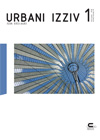Hotterdam: Mapping the social, morphological, and land-use dimensions of the Rotterdam urban heat island
Hotterdam: Mapping the social, morphological, and land-use dimensions of the Rotterdam urban heat island
Author(s): Frank Van Der Hoeven, Alexander WandlSubject(s): Social Sciences, Rural and urban sociology
Published by: Urbanistični inštitut Republike Slovenije
Keywords: urban heat island; morphology; land use; elderly; climate adaptation; Rotterdam;
Summary/Abstract: Climate scientists forecast that heat waves will occur more often in the Netherlands in the coming decades. The Hotterdam study accordingly measured urban heat and modelled the surface energy balance in the Dutch city of Rotterdam. It identified in detail the city’s social, morphological, and land-use dimensions using a geographic information system (GIS), 3D models, and satellite images. It used hierarchical and multivariate regression analyses to determine the links between temperatures and the surface energy balance on the one hand, and social, morphological, and land-use aspects on the other. The Hotterdam study did establish a link between the urban heat island effect in Rotterdam and the health of its population. It also statistically explained the high rate of mortality among seniors seventy-five and over during the summer of 2006. The spatial concentration of senior citizens, the average age of the buildings they live in, and the sum of the sensible heat flux and storage heat flux play a large role. Imperviousness, the leaf area index, the building envelope, surface water, and shade are the dimensions that best explained the Rotterdam urban heat island. We mapped these aspects in two heat-maps that help in setting priorities for implementing climate adaptation measures.
Journal: Urbani izziv
- Issue Year: 29/2018
- Issue No: 1
- Page Range: 58-72
- Page Count: 15
- Language: English

